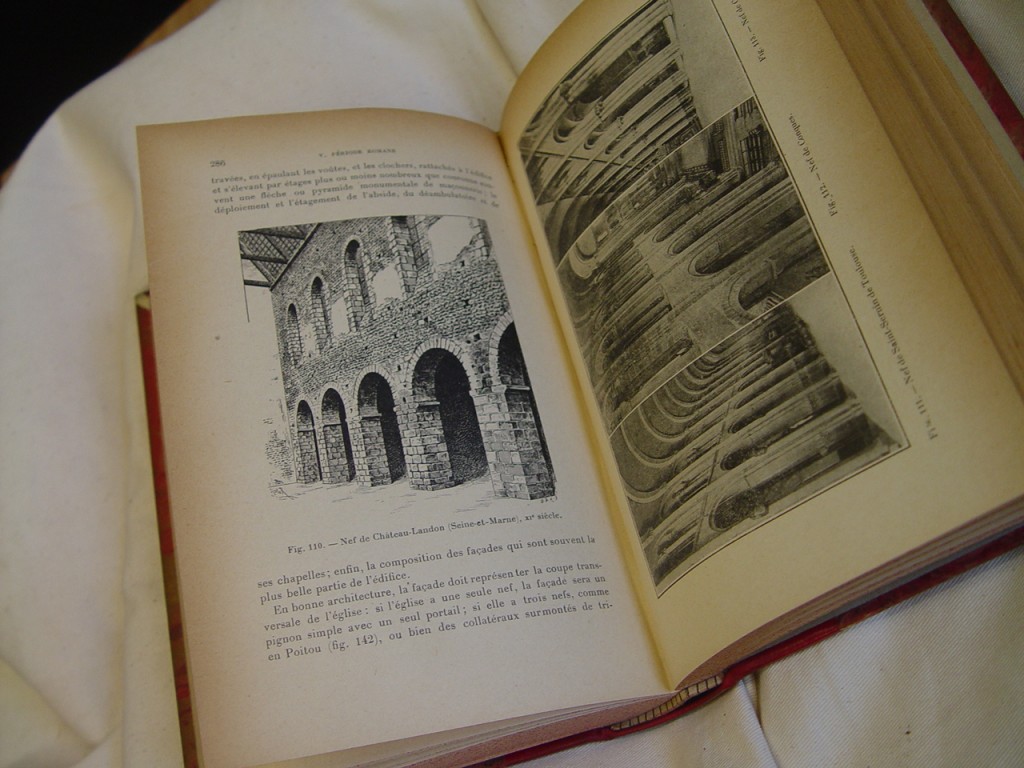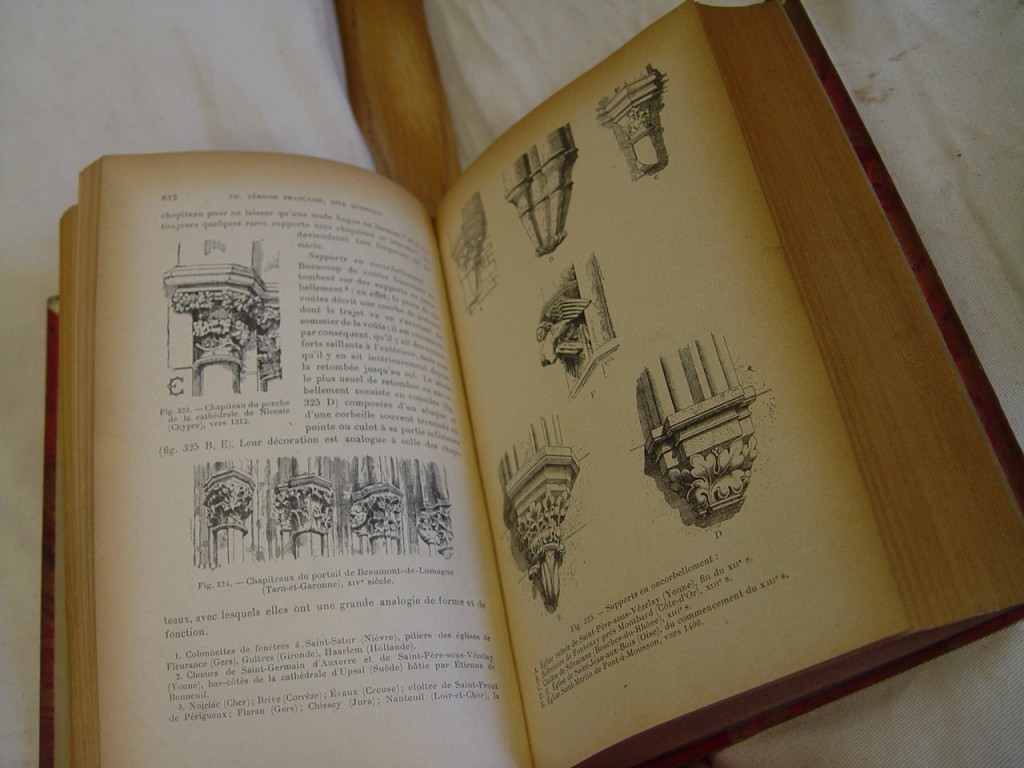Enlart, Camille. Architecture Religieuse. Vol. 1, bks. 1 and 2, Manuel d’Archéologie Française depuis les Temps Mérovingiens jusqu’à la Renaissance. Paris: Picard, 1919-1920.
Collection: Cret
Turn-of-the-century gothic art historian Camille Enlart examined French architecture and fashion in his three volume work Manuel d’Archéologie Francaise. Published in two books, the first volume looks specifically at French religious architecture and continues Enlart’s career assertion that the cultural vacuum created by the decline of the Roman empire facilitated the insertion of French forms and themes into Mediterranean art and architecture. Enlart produces a formal survey analyzing various architectural elements, building plans, and construction practices to discern a more precise relationship between forms emerging from classical modes and those of Gallic (and likely Celtic) provenance. The resulting positivist history suggests that the Carolingian epoch represents a decided shift in the dominant aesthetic vocabulary in this part of Europe.
Each book in Enlart’s Manuel d’Archéologie Française includes a number of sketches, plans, and photographs of various architectural elements, construction practices, buildings, sculptures, and costumes. Comparative series play a significant role in each work providing information about the variety and evolution certain architectural objects.
For this volume, Enlart produced an extensive bibliography including works in English, French, Italian, and German divided into five categories: works that deal generally with the chronology and geography of French architecture; works that deal with the origins and duration of early Christian and Romanesque architecture; works that deal with French monuments from the 11th to the 16th century; works that deal with French influence in other countries for the same period; and works concerned with religious architecture. There is no index.
Library of Congress call number: NA 1043 E6 1919



